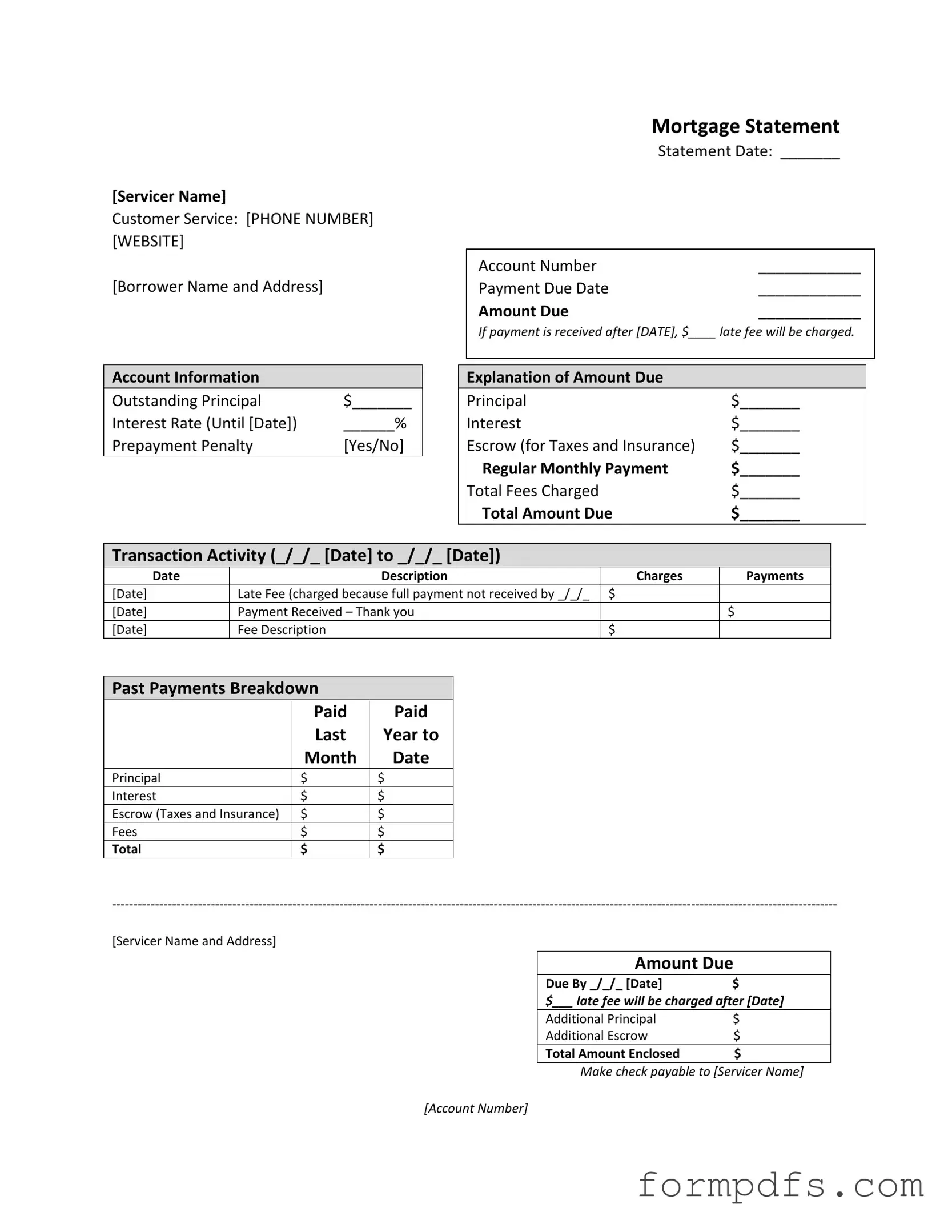What is a Mortgage Statement?
A Mortgage Statement is a document provided by your mortgage servicer that outlines your account details. It includes information such as the outstanding principal balance, interest rate, payment due date, and any fees charged. This statement helps you keep track of your mortgage payments and manage your financial obligations effectively.
How can I read my Mortgage Statement?
Your Mortgage Statement is organized into sections. Start with the account information, which shows your outstanding principal and interest rate. Next, review the explanation of the amount due, which breaks down your monthly payment into principal, interest, and escrow for taxes and insurance. Finally, check the transaction activity for a record of recent payments and charges.
What happens if I make a late payment?
If your payment is received after the due date, a late fee will be charged. The amount of this fee is specified on your statement. It’s important to pay on time to avoid additional costs and potential negative impacts on your credit score.
What should I do if I can’t make my mortgage payment?
If you are experiencing financial difficulty, it’s crucial to reach out to your mortgage servicer. They can provide information about mortgage counseling or assistance programs. Taking action early can help you avoid falling further behind on your payments.
What is a partial payment and how does it affect my mortgage?
A partial payment is any amount less than your total monthly payment. These payments are not applied directly to your mortgage balance; instead, they are held in a separate suspense account. To have those funds applied to your mortgage, you must pay the remaining balance of the partial payment.
